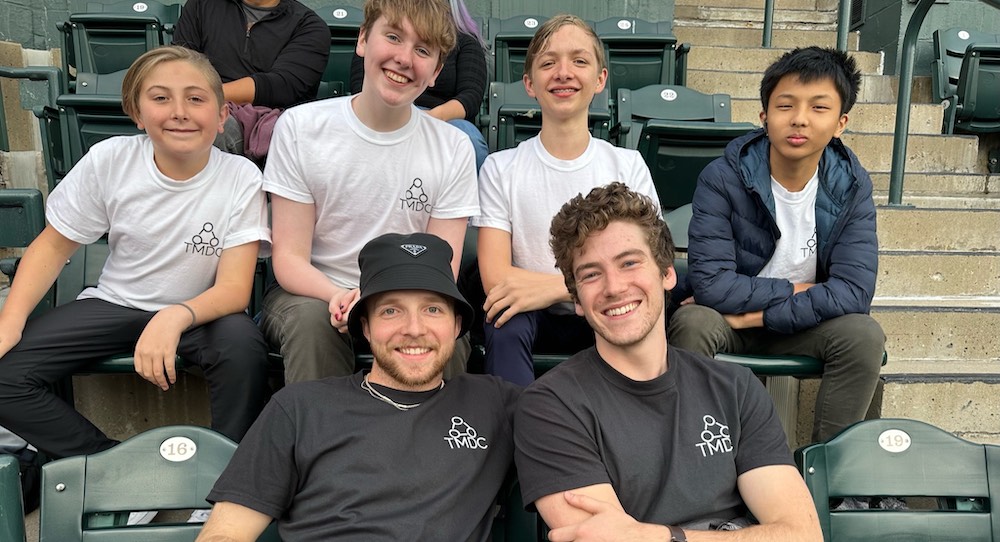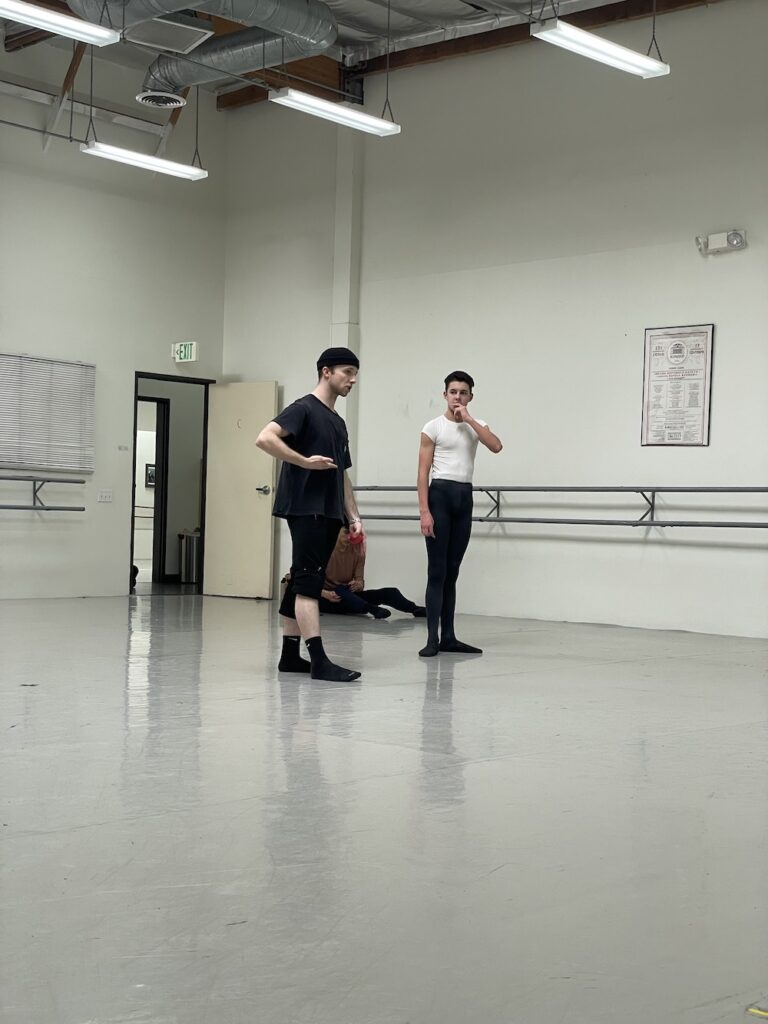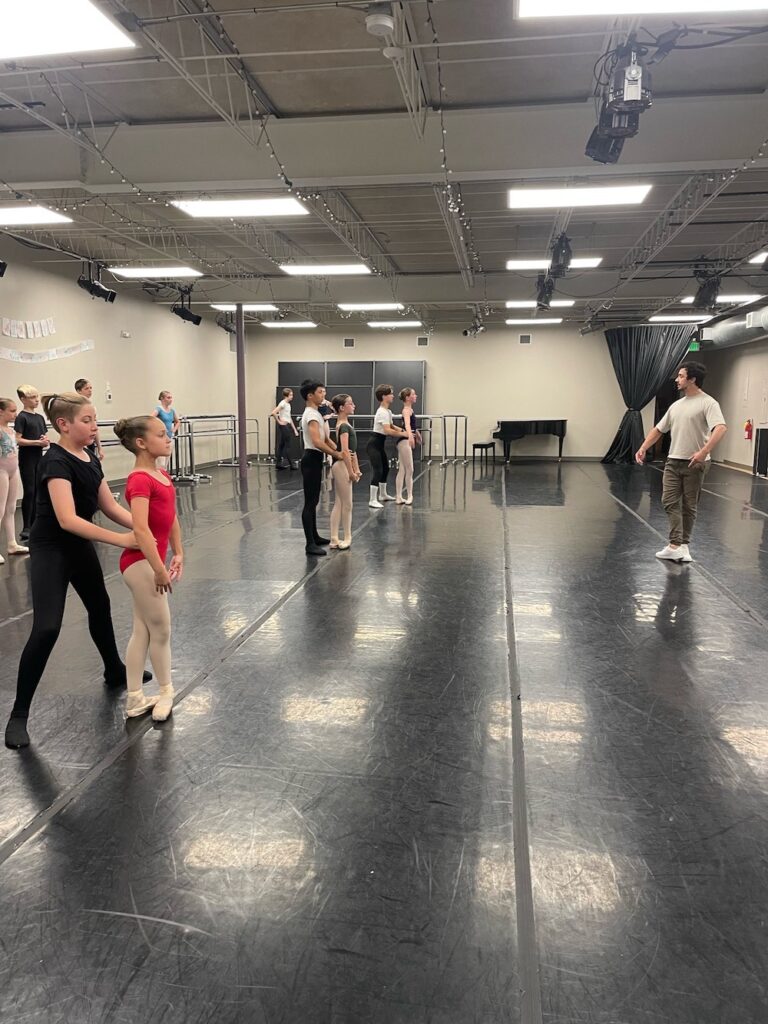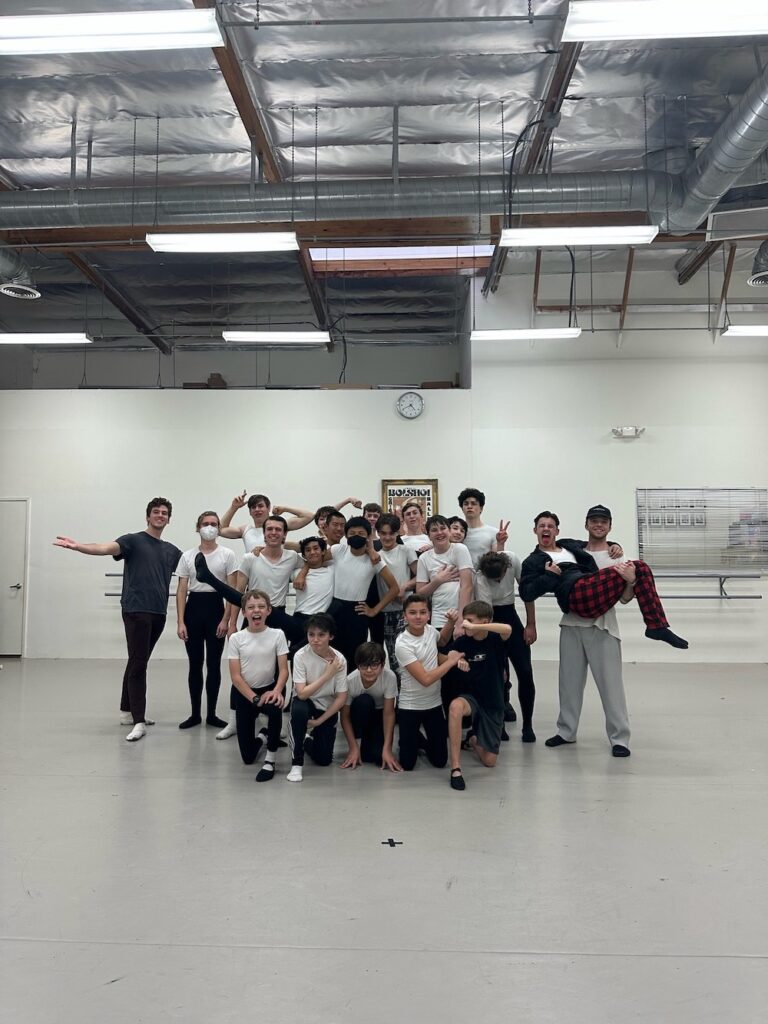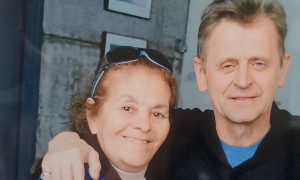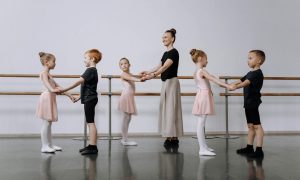Being a boy in the dance world can feel a little isolating at times. But Bryce Lee, Ryan Lenkey, and Noelle Lee from The Male Dance Connection (TMDC) are looking to change that. The collective started by offering men’s classes over Zoom during lockdown – and quickly found that this online community has been sorely needed since well before the pandemic.
TMDC now provides supplemental men’s ballet, contemporary, conditioning and even nutrition classes to dance schools in the U.S., both through Zoom and occasional in-person events. They especially cater to smaller studios who don’t have enough male students to provide them with a specialized training program.
Even beyond the training, the purpose of the initiative is to build community. “You’re kind of ostracized as a male student in any form of dance,” notes TMDC Director Bryce Lee. “Without resources, you can get very discouraged. I went through a phase where I didn’t want to dance anymore, but I realized it was just my environment. So we’re trying to create a healthy environment as a bridge for these guys to keep dancing, stay motivated and meet likeminded guys.”
Noelle Lee, TMDC’s administrative director and Bryce’s sister, also noted the value of young men having male teachers. “The boys can talk to them. We had a workshop where Bryce and Ryan even covered things like hygiene when it came to pas.”
“A lot of their teachers don’t necessarily want to touch on subjects like how to wear a dance belt, or the importance of a dance belt. Or deodorant.” Bryce adds. Even when those points are addressed, teachers can unintentionally make male-specific subjects feel awkward or unwelcome. In so many ways, TMDC teachers act as older brothers, showing the younger guys the ropes.
Having role models to look up to – male teachers who are also professional dancers – is pretty special for young boys in dance. When you’re a kid whose world hasn’t expanded beyond your home studio yet, it can be hard to conceptualize what’s out there waiting for you. TMDC has created a link to an industry that is not only accepting of, but desperate for male dancers.
Bryce notes, “One of our goals is to be a transitory system, helping these boys go from a recreational studio to, eventually, if they’re developmentally and financially ready, a pre-professional program that best fits their overarching goals.” And it seems to be working. “As of our current ‘graduating class’ so to speak, these boys are getting offers pretty consistently. Offers from companies that I’ve partly recommended or that they’ve found through an avenue we’d advised them to look into.”
The knowledge and opportunities this program makes available to these students is immeasurable, but some studio owners have been wary of external involvement. “We are supplemental training. We are not here to scalp students,” explains Bryce. “Our mission is to serve these studios, provide them with our expertise and assistance. We just want to help.” And not just help the male students – help the studios proper. Before TMDC, Bryce worked in-person at a Colorado studio that had between nine and 12 boys pre-pandemic. Post-pandemic, that number dropped to two. “There’s been this massive drop off rate, which we’re trying to minimize. Especially in rural communities where there are not many boys or much social opportunity.”
Ballet’s heavily gendered traditions have been a topic of discussion among TMDC’s teachers. The mission of the program since its inception has been to support boys who feel underrepresented in the young years of dance training, but that doesn’t mean it’s a closed ecosystem. “We spent time thinking about our name, The Male Dance Connection,” says Bryce, “because we didn’t want to exclude anybody. We still wanted to keep that identity in some regard, but we’re welcoming of each and every person. We do have a few dancers who have transitioned and identify more so as male – we harness that and welcome them with loving arms. We haven’t had a student approach us yet wanting to identify more with traditionally female roles or aesthetics within ballet, but once we get there, that’s welcome, too.”
TMDC teaches techniques that are labelled as male, but attendance to men’s class is open. Ryan Lenkey, associate director and head of social media and marketing, expresses, “Because it is a classical artform, it is still heavily gendered. Men in dance require specific skillsets (like jumps and turns), so that’s the kind of emphasis that we focus on. But we’re here to support; dance is for everybody.”
Not to mention the benefits of well-rounded training. Noelle adds, “We have at least one student who does pointe at his home studio, which I think is super beneficial. Working in pointe shoes is helpful for learning how to use your feet, especially for jumping. We haven’t had any girls ask about taking classes, but I think it would be so beneficial for them. You need that power in your legs.”
So what does ‘dancing like a man’ mean to The Male Dance Connection? “That conversation has come up a lot with some studios in more rural communities,” says Bryce. “The concept of ‘you don’t dance like a man.’ Whenever I hear that, I think, ‘You don’t have to.’ As long as you’re enjoying it and holding yourself correctly in your technique, that’s okay. We and the dance world need to be careful about the vocabulary that is used in classes.”
As for future goals, TMDC is working toward hosting more in-person classes across a broader range of cities, like their recent event in Southern California. They’re aiming for 501c3 non-profit status so that they can provide free or partially underwritten classes and privates, and eventually provide scholarships for young men in dance.
TMDC is inspired by other programs who support young male dancers, like Petite Oasis Foundation and Boys Dance Too. Initiatives like these prove to boys in dance who feel isolated or excluded that there is a place for them, and that more of those communities are being created every day.
Connect with The Male Dance Connection:
Website: www.themaledanceconnection.com
IG: www.instagram.com/themaledanceconnection
FB: www.facebook.com/themaledanceconnection
TikTok: www.tiktok.com/@themaledanceconnection
By Holly LaRoche of Dance Informa.


